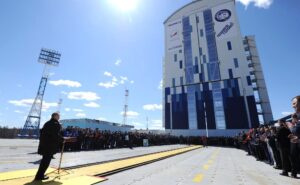These are findings from new reports by the Center for Strategic and International Studies (CSIS) and the Secure World Foundation (SWF) released April 1.
CSIS’ Space Threat Assessment and SWF’s Global Counterspace Capabilities are updated annually with open source information. They highlight global developments in anti-satellite weapons.
The most significant change from a year ago has been Russia’s more aggressive behavior, said CSIS.
“Russia was the most active in testing anti-satellite weapons over the past year, including tests of a space-based weapon that appears to be capable of firing projectiles at other satellites,” said the Space Threat Assessment.
According to the SWF report, “there is strong evidence that Russia has embarked on a set of programs since 2010 to regain many of its Cold War-era counterspace capabilities. Since 2010, Russia has been testing technologies for rendezvous and proximity operations in both low Earth and geostationary orbits that could lead to or support a co-orbital anti-satellite capability.”
These technologies can be used for non-aggressive applications such as surveillance and inspection of foreign satellites, the report says. “However, Russia has deployed two ‘sub-satellites’ at high-velocity, which suggests at least some of their rendezvous and proximity operations in low Earth orbit are of a weapons nature.”
CSIS noted that Russia tested a co-orbital anti-satellite weapon in July 2020, and tested a direct-ascent anti-satellite weapon in December 2020. “These activities are not new and reflect a pattern of behavior in which Russia has continued to develop and reconstitute its counterspace capabilities.”
Anti-satellite weapons can be kinetic systems like missiles or electronic weapons such as jammers. Of particular concern are kinetic weapons that produce orbital debris when they strike a target. “They pose a serious risk to the space environment and the ability of all nations to use the space domain for prosperity and security,” CSIS said.



